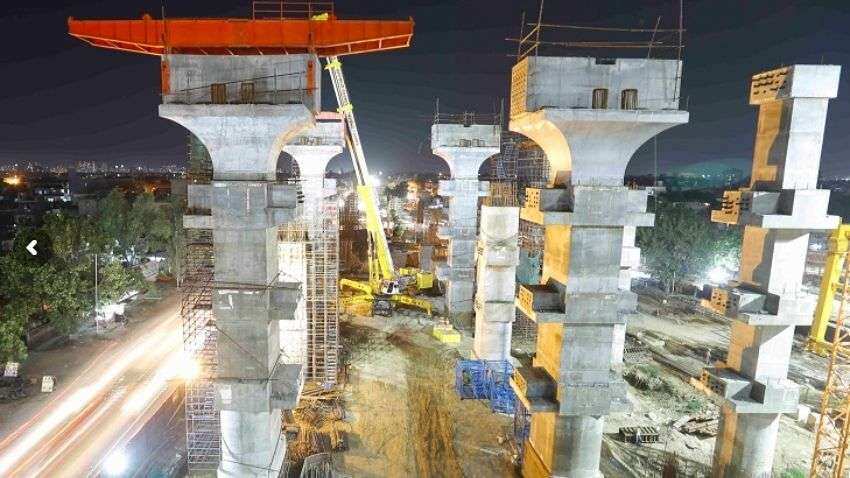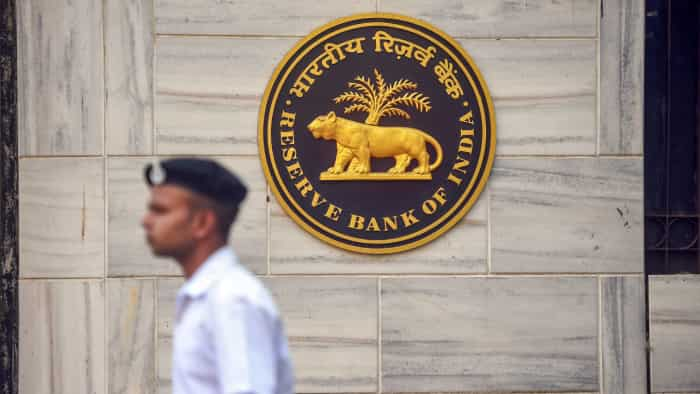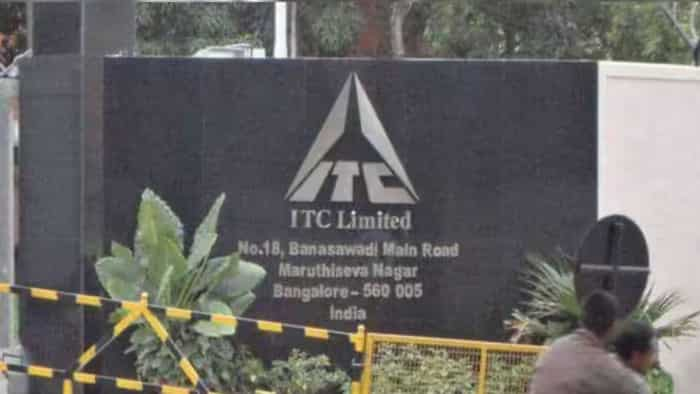NCRTC begins assembling of Special Spans for challenging sections of the RRTS corridor- check details here
As per the information provided by NCRTC, most of the elevated stretch of Delhi-Ghaziabad-Meerut RRTS corridor is passing through the median of Delhi Meerut road (erstwhile NH-58) and densely populated areas which have heavy traffic movement as well.

NCRTC is implementing India’s first RRTS corridor that connects Delhi with regional nodes of Ghaziabad, Murad Nagar, Modi Nagar, and Meerut. In this 82 km long RRTS corridor, a total of 70 km stretch is elevated, and 12 km stretch is underground.
As per the information provided by NCRTC, most of the elevated stretch of Delhi-Ghaziabad-Meerut RRTS corridor is passing through the median of Delhi Meerut road (erstwhile NH-58) and densely populated areas which have heavy traffic movement as well.
See Zee Business Live TV Streaming Below:
To construct the elevated viaduct of the RRTS corridor, NCRTC is erecting piers generally at an average distance of 34 meters (approximately). Post this, these piers are being joined by pre-cast segments with the help of launching gantries to construct a RRTS viaduct span.
However, maintaining this distance between piers is not practically possible in some complex areas where the corridor is set to cross over rivers, bridges, rail crossings, metro corridors, expressways, or other such existing public infrastructure.
Also, the maximum length of standard spans used to connect these piers is approximately 37 meters. To connect piers in such areas and congested zones, Special Spans are being used.
Special Spans are mammoth civil structures having beams made of structural steel. NCRTC is building Special Spans made of structural steel at a factory which is then transported to the sites on trailers during the night to avoid any bunch up of traffic and assembled in a systematic way with help of specialized cranes.
The size and structure of these steel spans are designed aesthetically in advance, in-line with the overall requirements of construction, installation, and usage.
NCRTC is establishing two such Special Spans, between Sahibabad to Ghaziabad, with customized shape, elevation, design, and weight. One of the spans is being set up at Vasundhara, which is 73 meters long and weighs 850 tonnes, to cross the railway crossing.
Another mammoth span is being set up for Ghaziabad RRTS station, the highest station of the RRTS corridor, crossing over the Red Line of Delhi Metro and the road overbridge. Portal Piers have been erected for the installation of Special Span on either side of the metro viaduct and road overbridge in Ghaziabad.
On this portal pier, Special Span of about 150 m in length is to be established. Its weight will be around massive 3200 tonnes and it will be installed at a height of about 26 meters from the ground. Special care is being taken in the assembling of this mega span due to the metro viaduct and road overbridge going below the RRTS viaduct.
The special spans will be pushed to establish at Ghaziabad and Vasundhara rail crossing from one side of the pier to reach the other side by the help of Winch and roller arrangement.
These pieces of Special Spans are factory-made, painted structures, and are ready to install directly. Hence, they save time and don’t affect the harmony of the surroundings be it population, traffic, or existing structures. The fabrication of these special spans, made of structural steel, is so fine that they don’t need any finishing post-installation and the next phase of track laying can be carried out immediately.
Also, on-site deployment of heavy machines, raw materials, and large number of workers for such large-scale construction work is practically not feasible. Complex construction activity on a massive scale in densely populated areas can cause safety issues, may affect routine operations of existing facilities, and can cause inconvenience to the common people.
Considering these aspects, NCRTC has proactively adopted this unique technique that would cause minimum inconvenience to the public, ensure smooth traffic management and operations, and safe construction.
Presently, with the tireless efforts of more than 11,000 workers and 1100 engineers on the 82 km long RRTS corridor, about 900 piers of the elevated section with 40 km of foundation and 10 km of viaduct have already been completed, most of which is located in the priority section.
Along with the construction of the viaduct in the priority section, the construction work of the superstructure of all five stations - Sahibabad, Ghaziabad, Guldhar, Duhai, and Duhai depot is in advanced stages. Track laying work is going on by connecting rail tracks on the viaduct between Guldhar to Duhai, for which a mobile flash welding plant has been set up.
NCRTC team is working day and night at the sites with 17 launching gantries (Tarini) in operation for the elevated section in the corridor. The construction work for the underground stations has also started. The priority section of 17 km between Sahibabad to Duhai is targeted to be commissioned by March 2023 and the full corridor by 2025.
Get Latest Business News, Stock Market Updates and Videos; Check your tax outgo through Income Tax Calculator and save money through our Personal Finance coverage. Check Business Breaking News Live on Zee Business Twitter and Facebook. Subscribe on YouTube.
RECOMMENDED STORIES

SBI 2222-Day Green Deposit FD vs Central Bank of India 2222-Day FD: What will you get on Rs 4,44,444 and Rs 7,77,777 investments in these special FD? Know here

Top 7 SBI mutual funds with highest SIP returns in 15 years: Rs 7,777 monthly investment in No. 1 scheme has zoomed to Rs 97,64,660

Small SIP, Big Impact: Rs 11,111 monthly investment for 15 years, Rs 22,222 for 10 years or Rs 33,333 for 7 years, which do you think works best?
06:44 PM IST










 At 78.67 lakh, Delhi Metro records highest-ever daily ridership on November 18
At 78.67 lakh, Delhi Metro records highest-ever daily ridership on November 18 NCRTC signs MoU with DMRC for integrated QR-ticketing system
NCRTC signs MoU with DMRC for integrated QR-ticketing system NCRTC developing over 8,000 vehicles parking spaces at its stations
NCRTC developing over 8,000 vehicles parking spaces at its stations  NCRTC MD inspects Namo Bharat corridor in Delhi; trains to operate soon
NCRTC MD inspects Namo Bharat corridor in Delhi; trains to operate soon  Shalabh Goel appointed NCRTC's MD
Shalabh Goel appointed NCRTC's MD